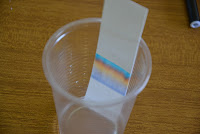Task 2: Place your household chemicals from your first chart into a second chart that has two compounds together. An example has been made below.
Note: You will need to use the internet to find out how these compounds react together.
When a reaction occurs between compounds / elements there is always an end result in the form of a solid/liquid or gas. This always results in a new element being formed. For this process to occur, one of the results can be hot or cold.
Compounds (ingredients)
|
Method (what to do)
|
Chemical recation
| |
1 baking soda
2 vingerg,
|
Half cup of baking soda
A few drop of vinegar
|
| |
1.bleach
2. Baking soda
|
Mix 1 to 2/3 cups baking soda, ½ cup castile soap or other quality liquid dish detergent, ½ cup water, 2 tablespoons of white
|
When bleach and baking soda are mixed, the cleaning properties of both are improved. ... This happens when only 1/2 cup of baking soda is added to a typical laundry load with bleach. However,bleach should definitely not be mixed with certain other common household products because toxic gases form.
| |
1.salt
2. Lemon
|
|
Because of the presence of citric acid, the lime juice & salt mixture will be slightly acidic. It will be tart (sour) and salty, to taste. ... When you mix salt with lemon juice, the salt will dissolve in lemon juice to some extent. However, no chemical reactiontakes place.
| |
for 2 tablespoons of fresh lime or lemon juice, 1 tablespoon of sugar, 1/2 tablespoon of bleach and 1 quart of water. Mix the ingredients.
| |||
